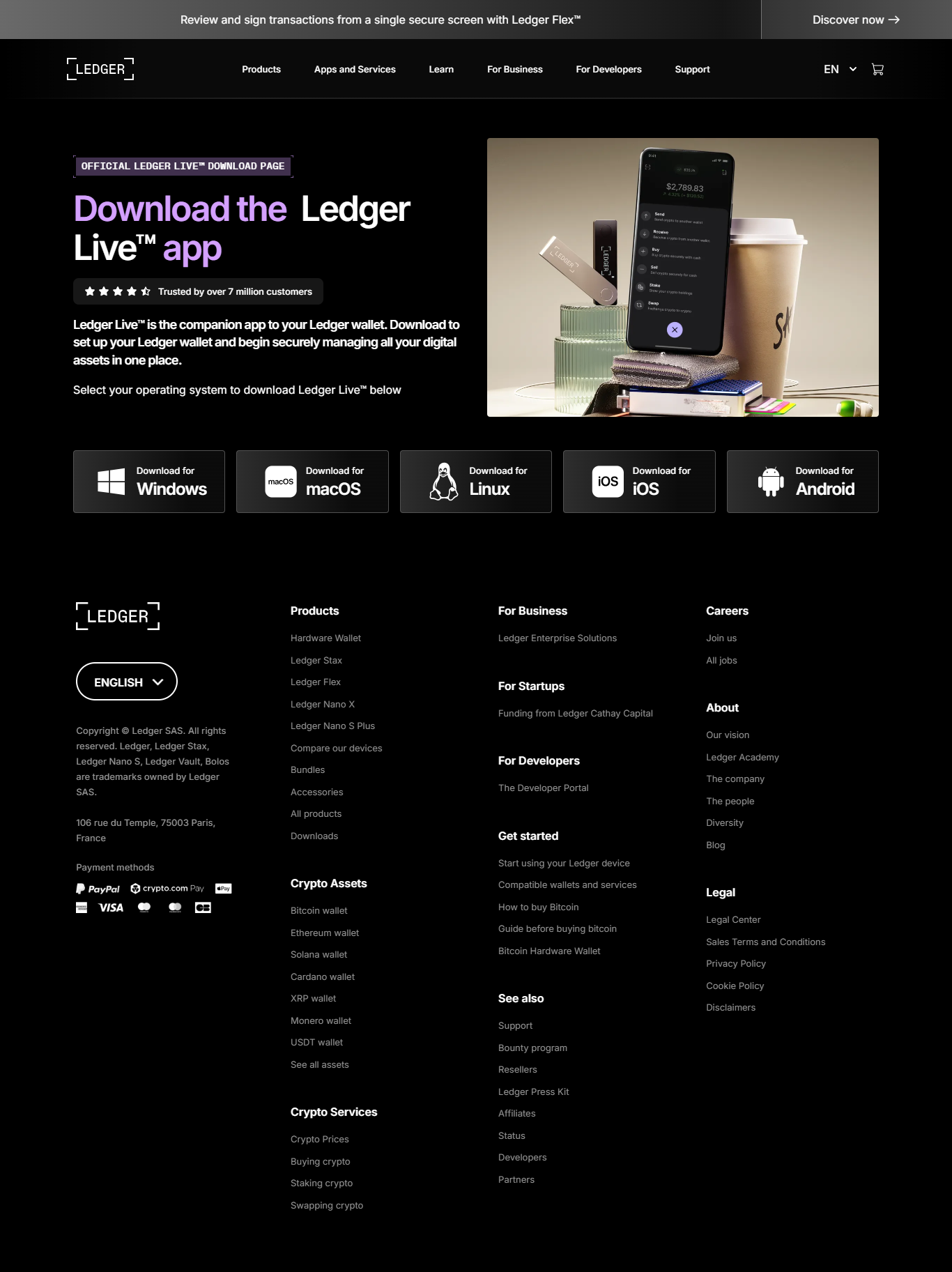
Ledger Login: The Complete 2025 Guide for Safe Crypto Access
A fresh, deep, visually rich walkthrough of how Ledger Login works — from first-time setup to advanced security layers.
When people search for “Ledger Login”, they are usually looking for a doorway into the world of secure crypto management. But unlike traditional platforms—where logging in means typing an email and password—Ledger’s login process is rooted in hardware authentication, offline private keys, and crypto-grade security engineering.
This makes Ledger Login unique: you are not logging in to a website, app, or cloud account. Instead, you are proving your identity through a physical device that can never expose your private keys. If you are new to crypto security, this guide will take you from basics to mastery in a smooth, intuitive, and practical way.
By the end of this comprehensive resource, you’ll understand how Ledger Login works, why it matters, how Ledger Live interacts with your device, and how to avoid mistakes that put crypto at risk. As more users move toward self-custody, this knowledge becomes not just helpful—but essential.
Why Ledger Login Exists: The Real Purpose Behind the Process
Some users wonder why they must use a hardware device at all. After all, shouldn’t logging in be easy? But Ledger flips the idea of convenience on its head by introducing security-first access.
In a digital ecosystem full of malware, phishing, and exchange collapses, Ledger Login stands out because it is independent of online accounts. It relies on three unbreakable layers:
- Hardware PIN protection — stops unauthorized device access.
- Secure Element chip — prevents extraction of private keys.
- Offline isolation — keeps keys away from internet threats.
This entire approach reshapes digital identity. You don’t log in through Ledger; your Ledger validates you.
Ledger Login: A Refined Step-by-Step Walkthrough
Step 1: Connect Your Ledger Device
For Ledger Nano S or Nano S Plus, connect via USB. For Ledger Nano X, you may use Bluetooth on mobile devices. The moment the device powers up, it becomes your secure identity key.
Step 2: Enter Your PIN Securely
Your PIN is entered directly on the device’s little screen, not your computer. This prevents keyloggers from capturing it, reinforcing cryptographic privacy.
Entering the wrong PIN too many times resets the device — a powerful anti-theft security measure.
Step 3: Open Ledger Live
Ledger Live acts as your dashboard. It displays balances, manages networks, sends/receives assets, and handles app installations. But it never receives your private keys.
Step 4: Validate the Device’s Authenticity
Ledger Live automatically verifies your hardware—checking firmware integrity, Secure Element signatures, and anti-tamper indicators. This step ensures your device wasn't modified or compromised.
Step 5: Full Access Granted
Once authenticated, you can explore accounts, sign transactions, manage staking, interact with decentralized apps, or add new crypto networks — all while maintaining offline key protection.
Inside Ledger Login: A Deep Dive Into Its Security Design
Ledger Login is built on layers of mathematical and hardware-based protection. The Secure Element is an advanced microchip that protects against side-channel attacks, voltage glitching, and chip-level extraction attempts.
Some essential elements include:
- ECC cryptography for signing operations.
- Hardware-based random number generation (RNG).
- Device-bound private keys that cannot leave the chip.
- Tamper-resistant design that detects hardware modifications.
These elements work together to create a login system that is mathematically secure and physically protected. In other words, Ledger Login doesn’t just rely on user input—it relies on engineering rigor and cryptographic certainty.
How Ledger Login Compares to Other Crypto Access Methods
| Feature | Ledger Login | Software Wallets | Centralized Exchanges |
|---|---|---|---|
| Private Key Storage | Offline in Secure Element | Stored on device | Stored by company |
| Authentication Method | PIN + Hardware Verification | Password or seed phrase | Email + Password |
| Phishing Exposure | Very Low | Medium | High |
| Control of Assets | Full Self-Custody | Self-Custody | No — Custodial |
A Simple Way to Think About Ledger Login
Imagine your Ledger device as a physical key to a digital vault. Ledger Live is simply the screen showing what's inside—but cannot open the vault without your key, your PIN, and your approval. This structure gives Wallet-level sovereignty that online platforms can't match.
FAQs About Ledger Login
Is Ledger Login the same as logging into Ledger Live?
Not exactly. Ledger Live is an interface; the actual login happens on your hardware device.
Can someone log in without my PIN?
No. Entering incorrect PINs too many times wipes the device entirely.
Do I need internet to log in?
You only need internet for using Ledger Live, not for device authentication.
Can malware interfere with Ledger Login?
Malware cannot compromise private keys thanks to offline storage and Secure Element protection.
Final Thoughts: Why Ledger Login Is Essential for Crypto Protection
Ledger Login represents a powerful shift away from centralized platforms and insecure software wallets. It is the gateway to controlling crypto independently and securely, relying on offline hardware verification and robust PIN authentication.
Whether you’re exploring DeFi, holding long-term assets, staking, or casually investing, mastering Ledger Login empowers you to take full responsibility for your digital wealth—safely, confidently, and without relying on third-party custodians.
In a world where crypto security is more important than ever, understanding Ledger Login is one of the smartest moves any user can make.